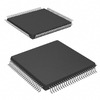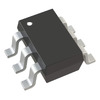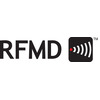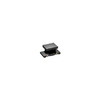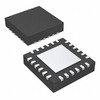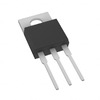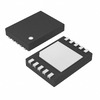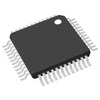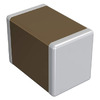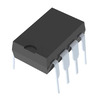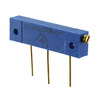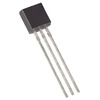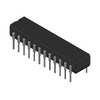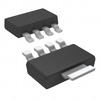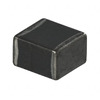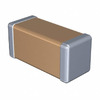How Much Do You Know About Lawnmower Batteries?
Catalog

What Size Battery Does a Lawnmower Need?
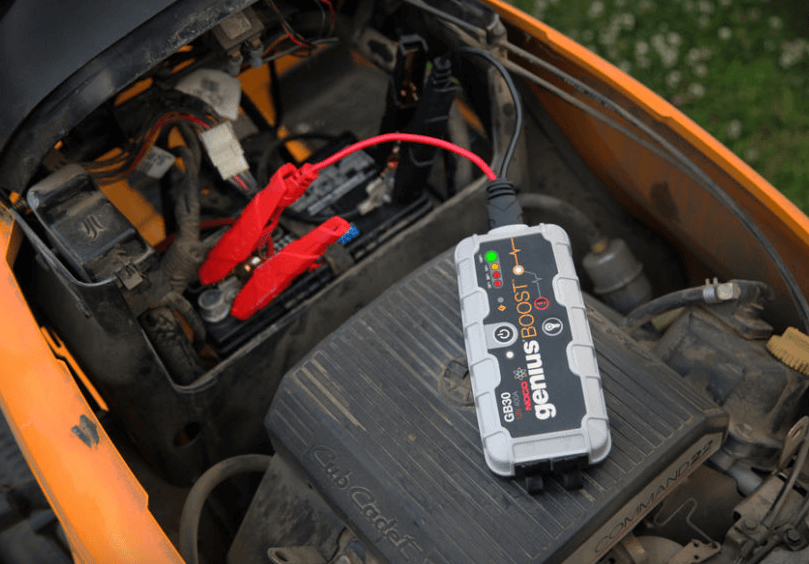
What is the Voltage of the Lawnmower Battery?
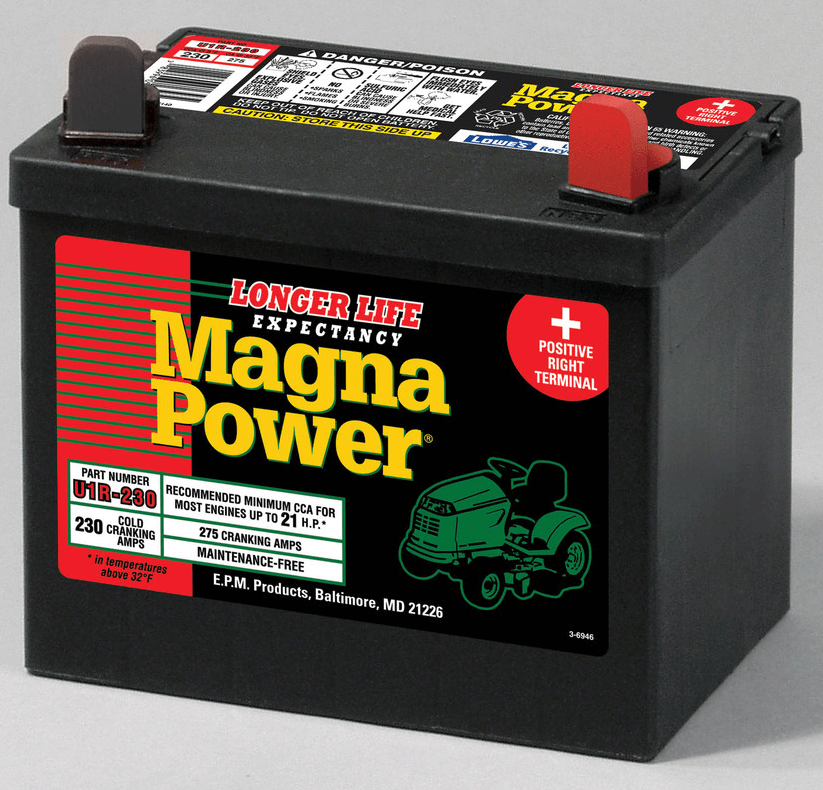
Lawn Mower Battery Chemistry Types and Terminal Types
Two Chemical Types of Batteries
Terminal Type
How Much Starting Current Does a Lawnmower Battery Draw?
Cold Starting Current
Battery Capacity
Reserve Capacity
How to Charge Lawnmower Batteries and Choose the Right Charger?
Common Specifications and Options for Lawnmower Starting Batterie
|
Battery Size |
Dimensions (inches/mm) |
Capacity |
CCA |
Weight |
|
U1 & U1R |
7.75 x 5.1875 x 7.3125 |
35 Ah (20h) |
300-320 |
22-26 lbs |
|
YTX5L-BS |
4.4375 x 2.75 x 4.125 |
4 Ah (10h) |
70-80 |
3.3-4.5 lbs |
|
YTX9-BS |
5.875 x 3.4375 x 4.125 |
6-8 Ah (10h) |
120-180 |
6-8 lbs |
|
YTX12-BS |
5.875 x 3.5 x 5.125 |
10 Ah (10h) |
160-210 |
7-10 lbs |
|
YTX14-BS |
5.875 x 3.4375 x 5.75 |
12-14 Ah (10h) |
190-235 |
8-11 lbs |
|
YTX20L-BS |
6.875 x 3.4375 x 6.125 |
14-20 Ah (10h) |
220-330 |
11-14 lbs |
|
YTX24HL-BS |
8.0625 x 3.4375 x 6.375 |
21 Ah (10h) |
300-350 |
13-18 lbs |
|
YTX30L-BS |
6.5625 x 4.9375 x 6.875 |
30 Ah (10h) |
360-400 |
17-22 lbs |
Chart 1: Features and Specifications of the Most Popular Lawn Mower Batteries
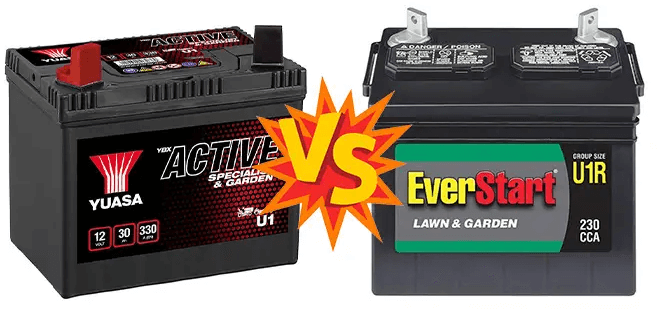
|
Model |
Battery Type |
Capacity (Ah) |
Weight (lbs/kg) |
|
AJC U1-300 |
Dual Purpose |
(18Ah?) |
14.08 lbs; 6.4kg |
|
Casil CA12330 |
Deep Cycle |
33Ah |
19.84 lbs; 9kg |
|
Chrome U1 Battery |
Deep Cycle |
35Ah |
23.5 lbs; 10.7 kg |
|
Deka 8AMU1R |
Starting |
- |
25 lbs; 11.3 kg |
|
Universal UB12350 |
Deep Cycle |
Universal UB12350 |
Deep Cycle |
|
AGM |
35Ah |
AGM |
35Ah |
|
315 CCA; 18 Amps, 60 minutes, down to 10.5 volts |
24.4 lbs; 11.1 kg |
315 CCA; 18 Amps, 60 minutes, down to 10.5 volts |
24.4 lbs; 11.1 kg |
|
- |
|
- |
|
|
VMAXTANKS V35-857 |
Deep Cycle |
VMAXTANKS V35-857 |
Deep Cycle |
|
AGM |
35Ah |
AGM |
35Ah |
|
300 CCA; 75 min RC (25 Amps, down to 10.5V) |
25 lbs; 11.3 kg |
300 CCA; 75 min RC (25 Amps, down to 10.5V) |
25 lbs; 11.3 kg |
|
Review |
|
Review |
|
|
Everlast 12350DC-NB |
Deep Cycle |
35Ah |
23.5 lbs; 10.7 kg |
|
ExpertPower EP1250 |
Deep Cycle |
50Ah |
13 lbs; 5.9 kg |
|
ExpertPower EXP12330 |
Deep Cycle |
33 (10h) |
23.8 lbs; 10.8 kg |
|
ExpertPower EXP35-Gel |
Deep Cycle |
35Ah |
22.82 lbs; 10.35kg |
|
Interstate Batteries DCM0035 |
Deep Cycle |
35Ah |
22.9 lbs; 10.4 kg |
|
Mighty Max ML35-12 |
Deep Cycle |
37Ah |
23.1 lbs; 10.5 kg |
|
Mighty Max ML35-12Gel |
Deep Cycle |
35Ah |
23.1 lbs; 10.5 kg |
|
Mighty Max ML35-12Li |
Deep Cycle |
35Ah |
10.0 lbs; 4.53kg |
|
Mighty Max ML-U1-CCAHR |
Dual Purpose |
18Ah (10h) |
14.57 lbs; 6.6 kg |
|
MotoBatt MBU1-35 |
Deep Cycle |
35Ah |
26 lbs; 11.8 kg |
|
Neptune T12-35NB |
Deep Cycle |
35Ah |
23.5 lbs; 10.65 kg |
|
Nermak Model:1250 |
Deep Cycle |
50Ah |
10.6 lbs; 4.8kg |
|
NPP NP12-35Ah |
Deep Cycle |
35Ah |
23.1 lbs; 10.5 kg |
|
Power-Sonic PS-12350 |
Deep Cycle |
35Ah |
24.7 lbs; 11.2 kg |
|
PowerSource U1-35 |
Deep Cycle |
35Ah |
25 lbs; 11.3 kg |
|
PowerStar PS12-35-D |
Deep Cycle |
35Ah |
23 lbs; 10.4 kg |
|
Renegade U1-35-WS |
Starting |
35Ah |
25 lbs; 11.3 kg |
|
Roypow S1230 |
Deep Cycle |
30Ah |
8.8 lbs; 4 kg |
|
SigmasTek SP12-35 |
Deep Cycle |
35Ah |
24.7 lbs; 11.2 kg |
Chart 2: The Most Popular U1/U1R Batteries and Specifications
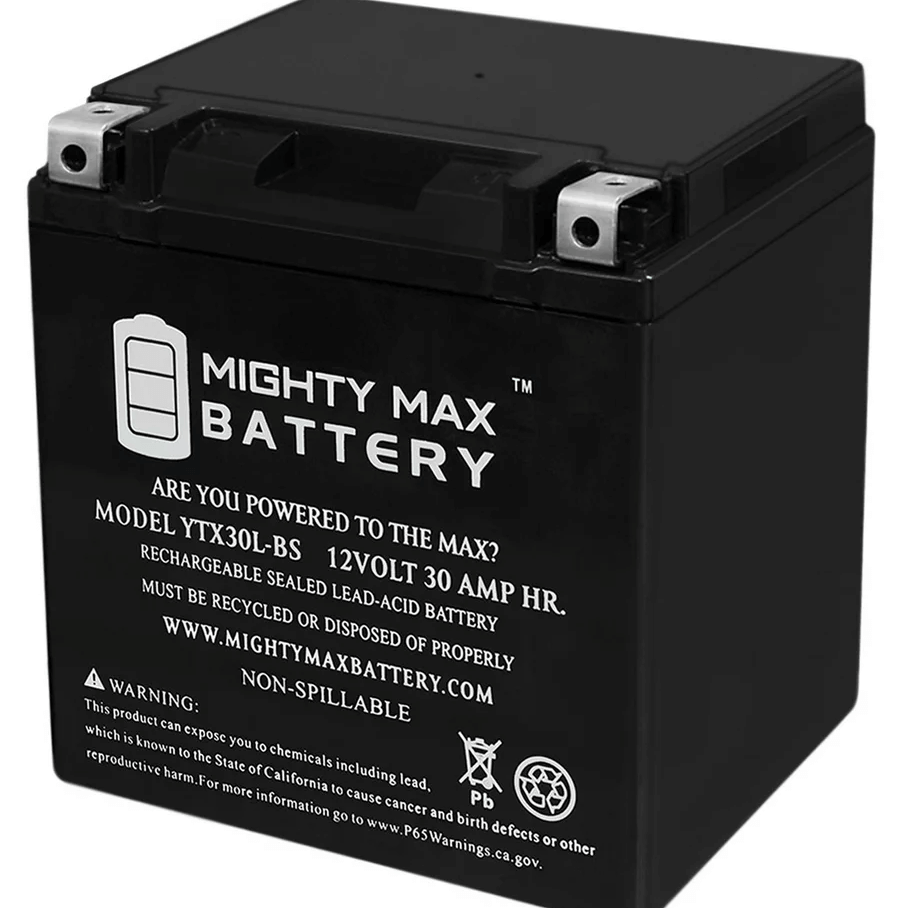
|
Model |
10h Capacity (Ah) |
CCA (Amps) |
Weight (lbs/kg) |
|
Banshee DLFP30-HL |
12.5 |
625 (Lithium) |
6.3 lbs; 2.86 kg |
|
Banshee YTX30L-BS |
28 |
350 |
22 lbs; 9.97 kg |
|
Chrome 30L-BS Zipp |
30 |
385 |
- |
|
Chrome YTX30L-BS |
30 |
385 |
19.8 lbs; 8.97 kg |
|
DEESPEAK DS-30L-BS |
16 |
720 (Lithium) |
8.2 lbs; 3.71 kg |
|
Energizer TX30L |
30 |
385 |
21.6 lbs; 9.8 lbs |
|
Mighty Max YTX30L-BS |
30 |
385 |
21.4 lbs; 9.7 kg |
|
MMG YIX30L-BS MMG-7 |
- |
480 (Lithium) |
4.18 lbs; 1.9 kg |
|
Neptune YTX30L-BS |
30 |
290 |
19 lbs; 8.61 kg |
|
NOCO NLP30 |
7.8 |
700 max. (Lithium) |
5.0 lbs; 2.27 kg |
|
Weize YTX30L-BS |
30 |
385 |
17.7 lbs; 8.1 kg |
|
PowerStar YTX30L-BS |
30 |
385 |
- |
|
TPE YTX30L-BS |
16 |
720 (Lithium) |
7.28 lbs; 3.3 kg |
|
UPLUS YTX30L-BS |
30 |
400 |
20.7 lbs; 9.38 kg |
|
Yuasa YUAM22H30 YB30L-B |
30 |
300 |
13.22 lbs; 6.0 kg |
|
Yuasa YUAM6230X YIX30L-BS |
30 |
385 |
22 lbs; 9.97 kg |
Chart 3: The Most Popular Lead-acid and Lithium YTX30L-BS Batteries
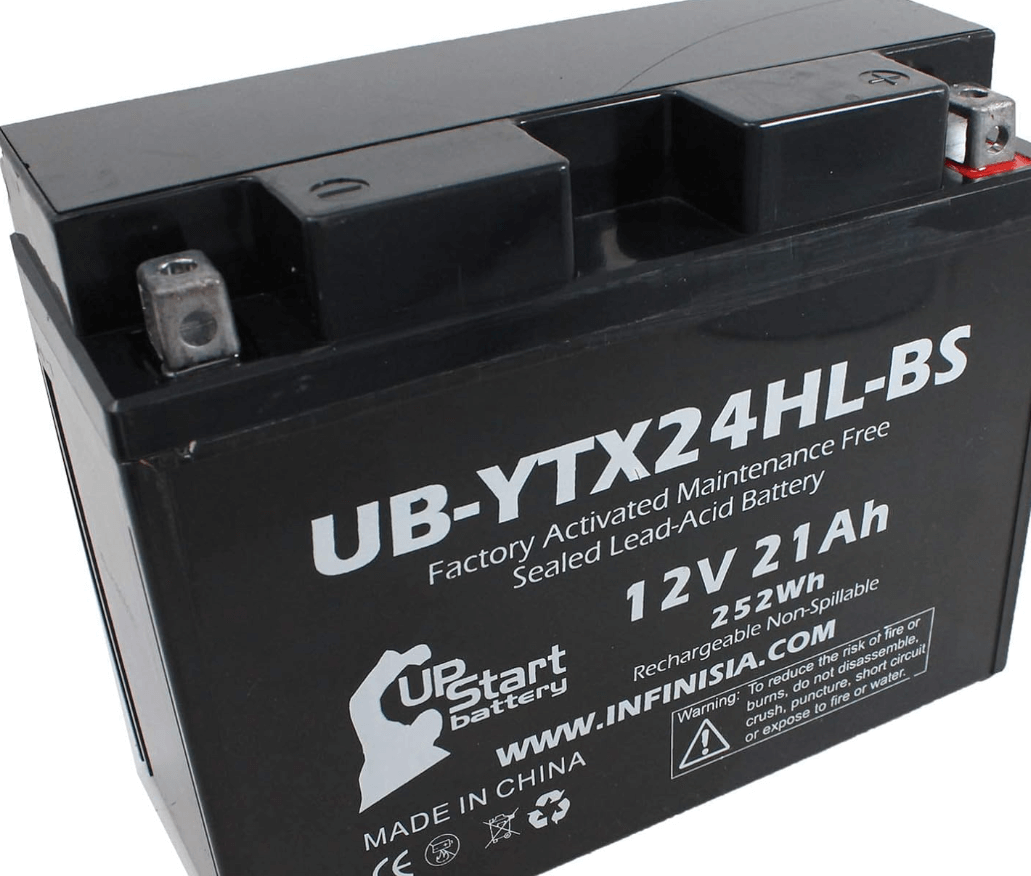
|
Model |
Chemistry |
10h Capacity (Ah) |
Weight (lbs/kg) |
|
AJC YTX24HL-BS Battery |
AGM |
- |
15.9 lbs; 7.2 kg |
|
Banshee YTX24HL-BS |
AGM |
24 |
18 lbs; 8.15 kg |
|
Chrome YTX24HL-BS Battery |
AGM |
21 |
13.1 lbs; 5.93 lbs |
|
Chrome YTX24HL-BS Pirate |
AGM |
21 |
13.1 lbs; 5.93 lbs |
|
Chrome YTX24HL-BS Zipp |
AGM |
21 |
13.1 lbs; 5.93 lbs |
|
Energizer TX24HL Battery |
AGM |
21 |
16 lbs; 7.25 kg |
|
Interstate YTX24HL-BS |
AGM |
21 |
15.4 lbs; 7.0 kg |
|
Mighty Max YTX24HL-BS |
AGM |
21 |
15 lbs; 6.78 kg |
|
Mighty Max YTX24HL-BS Gel |
Gel |
21 |
14.35 lbs; 6.5 kg |
|
MMG YTX24HL-BS MMG-6 |
Lithium |
- |
3.09 lbs; 1.4 kg |
|
PowerSource YTX24HL-BS |
AGM |
22 |
17.8 lbs; 8.06 kg |
|
PowerStar HD YTX24HL-BS |
AGM |
22 |
15.8 lbs; 7.17 kg |
|
Protek YTX24HL Gel |
Gel |
21 |
17 lbs; 7.7 kg |
|
Sigmastek STX24HL-BS |
AGM |
22 |
15.7 lbs; 7.1 kg |
|
ThrottleX ADX24HL-BS |
AGM |
21 |
19 lbs; 8.6 kg |
|
Upstart YTX24HL-BS Battery |
AGM |
21 |
15.18 lbs; 6.9 kg |
|
Yuasa YTX24HL-BS Battery |
AGM |
21 |
17.44 lbs; 7.9 kg |
Chart 4: The Most Popular Lead-acid and Lithium YTX24HL-BS Batteries and Specifications
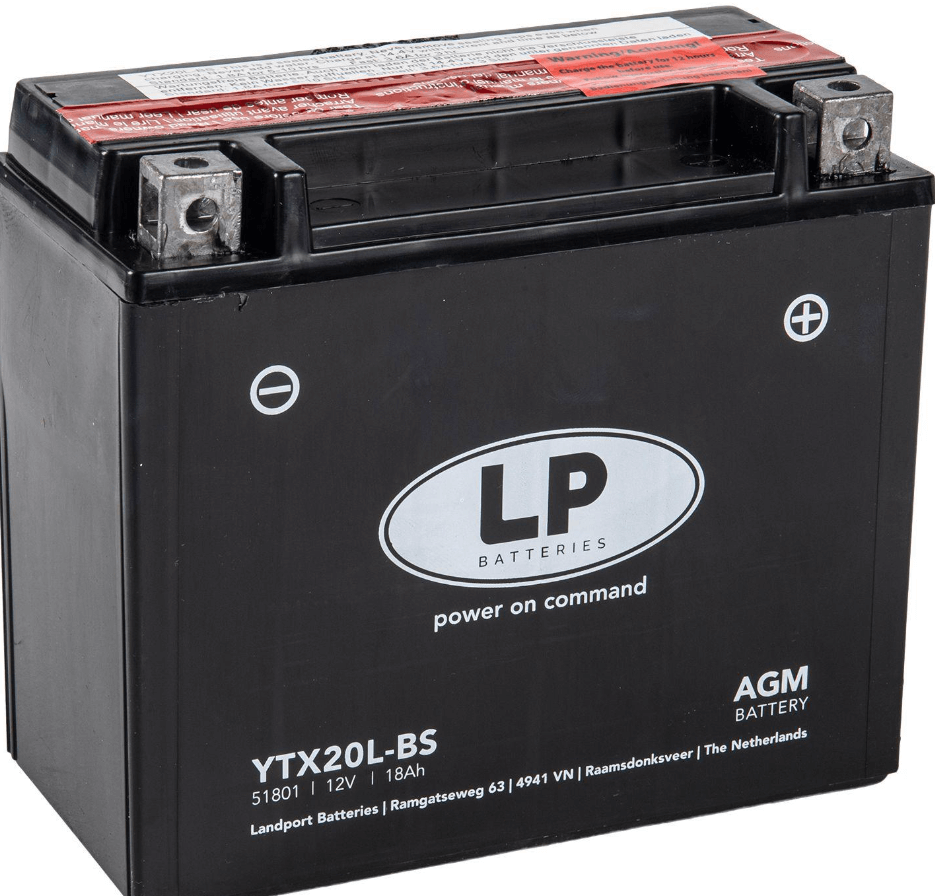
|
Model |
10h Capacity (Ah) |
Model |
10h Capacity (Ah) |
|
Antigravity AG-ATX20-RS |
10 |
680 (lithium) |
3.8 lbs; 1.73 kg |
|
Antigravity ATX-20-HD |
15 |
780 (Lithium) |
5.18 lbs; 2.35 kg |
|
Banshee 20HL-BS |
18 |
500 (Lithium) |
4.95 lbs; 2.24 kg |
|
Banshee YTX20L-BS |
18 |
310 |
18 lbs; 8.16 kg |
|
Battanux YTX20L-BS |
20 |
330 |
13.9 lbs; 6.3 kg |
|
Battery Tender BTL20A360CW |
6.1 |
360 (Lithium) |
3.42 lbs; 1.55 kg |
|
Chrome YTX20HL-BS |
18 |
310 |
13.52 lbs; 6.12 kg |
|
Chrome YTX20HL-BS Pirate Bay |
18 |
310 |
13.22 lbs; 6.0 kg |
|
Chrome YTX20L-BS |
18 |
270 |
13.52 lbs; 6.12 kg |
|
Chrome YTX20L-BS Pro |
18 |
270 |
13.88 lbs; 6.29 kg |
|
Chrome YTX20L-BS Zipp |
18 |
270 |
13.88 lbs; 6.29 kg |
|
DEESPAEK YTX20L-BS |
12 |
620 (Lithium) |
4.9 lbs; 2.22 kg |
|
Energizer TX20HL |
18 |
310 |
13.67 lbs; 6.2 kg |
|
EverLast CTX20HL-BS |
18 |
310 |
14.89 lbs; 6.75 kg |
|
EverLast CTX20L-BS |
14 |
220 |
13.77 lbs; 6.24 kg |
|
ExpertPower YTX20L-BS |
20 |
330 |
13.7 lbs; 6.2 kg |
|
ExpertPower YTX20L-BS Gel |
20 |
340 |
13.7 lbs; 6.2 kg |
|
Interstate YTX20HL-BS |
18 |
310 |
15 lbs; 6.8 kg |
|
Kimpex YTX20L-BS |
- |
270 |
13.22 lbs; 6.0 kg |
|
Mighty Max YTX20L-BS |
18 |
270 |
13 lbs; 5.9 kg |
|
MMG YTX20L-BS MMG-6 |
- |
420 (Lithium) |
3.09 lbs; 1.4 kg |
|
NOCO NLP20 |
7 |
600 max. (Lithium) |
3.73 lbs; 1.7 kg |
|
PowerStar YTX20L-BS |
18 |
220 |
15 lbs; 6.8 kg |
|
Renegade RG20L-WS |
20 |
500(?) |
14.6 lbs; 6.61 kg |
|
SDULIBITIY YTX20L-BS |
7 |
700 (Lithium) |
3.44 lbs; 1.56 kg |
|
SigmasTek STX20HL-BS |
18 |
310 |
13.44 lbs; 6.1 kg |
|
TPE DLF20L-BS |
12 |
620 (Lithium) |
4.4 lbs; 2.0 kg |
|
TPE YTX20L-BS |
7 |
700 (Lithium) |
3.09 lbs; 1.4 kg |
|
TYKOOL LFP20L-BS |
12 |
600 (Lithium) |
5.1 lbs; 2.3 kg |
|
UPLUS EB20H-3 |
18 |
310 |
13.1 lbs; 5.93 kg |
|
Weize Lithium YTX20L-BS |
8 |
600 (Lithium) |
5.874 lbs; 2.67 kg |
|
TPE DLF20L-BS |
12 |
620 (Lithium) |
4.4 lbs; 2.0 kg |
|
TPE YTX20L-BS |
7 |
700 (Lithium) |
3.09 lbs; 1.4 kg |
|
TYKOOL LFP20L-BS |
12 |
600 (Lithium) |
5.1 lbs; 2.3 kg |
|
UPLUS EB20H-3 |
18 |
310 |
13.1 lbs; 5.93 kg |
|
Weize Lithium YTX20L-BS |
8 |
600 (Lithium) |
5.874 lbs; 2.67 kg |
Chart 5: The Most Popular YTX20L-BS and YTX20HL-BS Batteries
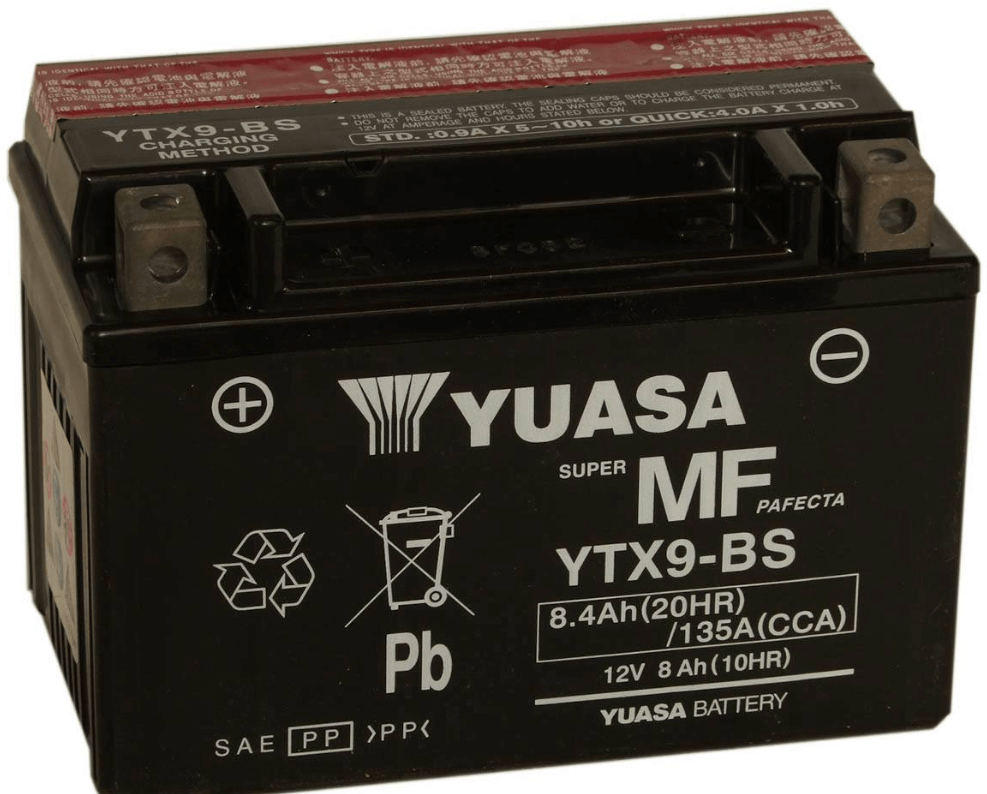
|
Model |
10h Capacity (Ah) |
CCA (Amps) |
Weight (lbs/kg) |
|
Banshee DLFP9-BS Lithium Battery |
8 |
150 (Lithium) |
2.3 lbs; 1.04 kg |
|
Battanux YTX9-BS Battery |
8 |
135 |
5.95 lbs; 2.70 kg |
|
Casil YTX9-BS Battery |
8 |
144 |
6.2 lbs; 2.81 kg |
|
Chrome YTX9-BS iGel Battery |
6 |
180 |
6.61 lbs; 3.0 kg |
|
Chrome YTX9-BS Pirate Bay Battery |
8 |
120 |
6.61 lbs; 3.0 kg |
|
DEESPAEK YTX9-BS Battery |
6 |
350 (Lithium) |
2.4 lbs; 1.09 kg |
|
Deka Sports Power ETX-9 |
8 |
120 |
7 lbs; 3.17 kg |
|
Energizer TX9 AGM Battery |
8 |
120 |
6.75 lbs; 3.06 kg |
|
EverLast CTX9-BS Battery |
8 |
135 |
7 lbs; 3.17 kg |
|
ExpertPower ETX9-BS Battery |
9 |
180 |
6.04 lbs; 2.73 kg |
|
Interstate YTX9-BS Battery |
8 |
135 |
7.8 lbs; 3.53 kg |
|
MaxLithium YTX9-BS Battery |
6 |
360 (Lithium) |
2.4 lbs; 1.09 kg |
|
Mighty Max YTX9-BS Battery |
8 |
135 |
6.72 lbs; 3.05 kg |
|
MMG YTX9-BS Lithium Ion |
5 |
300 (Lithium) |
2 lbs; 0.91 kg |
|
MotoBatt MBTX9U Battery |
10.5 |
- |
8 lbs; 3.62 kg |
|
Neptune YTX9-BS Battery |
9 |
120 |
6.6 lbs; 3.0 kg |
|
NOCO NLP9 |
3 |
400 max. (Lithium) |
2.29 lbs; 1.03 kg |
|
NOCO NLP14 |
4 |
500 max. (Lithium) |
2.58 lbs; 1.17 kg |
|
PowerStar YTX9-BS Battery |
8 |
- |
9 lbs; 4.08 kg |
|
Power-Sonic PTX9-BS Battery |
8 |
120 |
7 lbs; 3.17 kg |
Chart 6: The Most Popular YTX9-BS Batteries
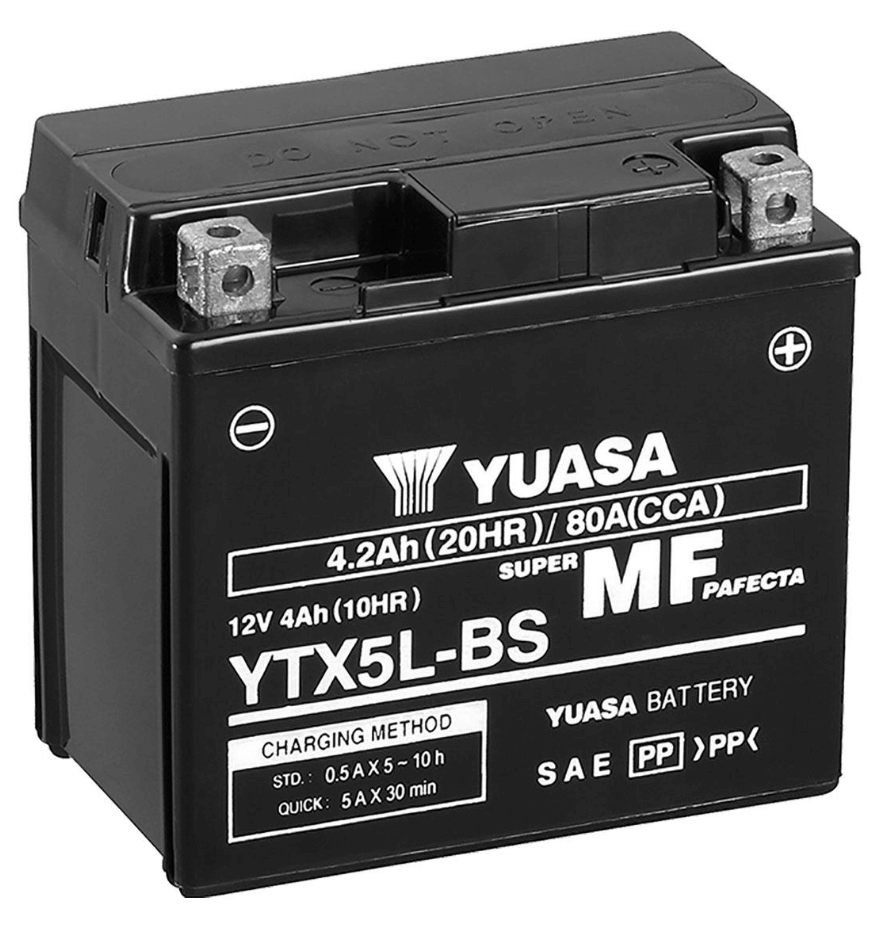
|
Model |
10h Capacity (Ah) |
CCA (Amps) |
Weight (lbs/kg) |
|
AJC ATX5L |
- |
70 |
4.14 lbs; 1.87 kg |
|
AMPXELL YTX5L-BS |
3.5 |
210 (Lithium) |
1.77 lbs; 0.80 kg |
|
Chrome YTX5L-BS |
4 |
70 |
4 lbs; 1.82 kg |
|
Chrome YTX5L-BS iGel |
4 |
70 |
4.05 lbs; 1.84 kg |
|
Chrome YTX5L-BS Pirate Bay |
4 |
70 |
3.7 lbs; 1.68 kg |
|
Energizer TX5L |
4 |
70 |
3.92 lbs; 1.78 kg |
|
Everlast CTX5L-BS |
4 |
80 |
- |
|
ExpertPower YTX5L-BS |
5 |
75 |
3.62 lbs; 1.64 kg |
|
ExpertPower YTX5L-BS Gel |
5 |
- |
3.61 lbs; 1.64 kg |
|
Interstate YTX5L-BS |
4 |
80 |
4.77 lbs; 2.16 kg |
|
MaxLithium YTX5L-BS |
3.5 |
210 (Lithium) |
1.76 lbs; 0.80 kg |
|
Mighty Max YTX5L-BS |
4 |
65 |
3.62 lbs; 1.64 kg |
|
Mighty Max YTX5L-BS Gel |
4 |
80 |
3.69 lbs; 1.67 kg |
|
MMG YTX5L-BS Gel |
5 (20h) |
80 |
4 lbs; 1.82 kg |
|
SDULIBITIY YTX5L-BS |
2 |
200 (Lithium) |
0.84 lbs; 0.38 kg |
|
SigmasTek ST5L-BS |
4 |
80 |
4.14 lbs; 1.86 kg |
|
TPE YTX5L-BS |
3 |
200 (Lithium) |
0.86 lbs; 0.39 kg |
|
UPLUS EB5-3 |
4 |
80 |
3.97 lbs; 1.80 kg |
|
Yuasa YTX5L-BS |
4 |
80 |
4.2 lbs; 1.90 kg |
|
Weize YTX5L-BS |
4 |
125 |
3.38 lbs; 1.53 kg |
|
MMG YTX5L-BS |
1.67 |
120 (Lithium) |
1.07 lbs; 0.49 kg |
|
Moskee YTX5L-BS |
4 |
70 |
3.97 lbs; 1.80 kg |
|
Neptune YTX5L-BS |
5 (20h) |
70 |
3.7 lbs; 1.68 kg |
|
NOCO NLP5 |
2 |
250 max. (Lithium) |
1.5 lbs; 0.69 kg |
|
PowerStar PS5L-BS |
4 |
145 |
4.5 lbs; 2.04 kg |
|
PowerTex PTX5L |
2.5 |
75 (Lithium) |
1.1 lbs; 0.50 kg |
Chart 7: The Most Popular YTX5L-BS Batteries
How to Safely Start a Lawnmower Battery from a Car?
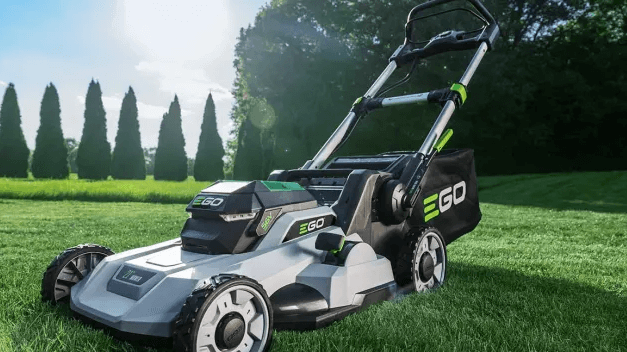
Battery Care Guide
Conclusion
Frequently Asked Questions [FAQ]
1. Can the lawnmower battery be charged when it is out of power?
2. What size battery do I need for my lawn mower?
3. What is a standard lawn mower battery?
4. What kind of battery is used in a lawn mower?
5. What to look for when buying a battery for a lawn mower?
About us
ALLELCO LIMITED
Read more
Quick inquiry
Please send an inquiry, we will respond immediately.
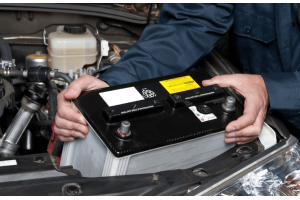
Popular BCI Battery Pack Introduction Guide
on April 22th

AA vs AAA Batteries: Which Is Better for Your Needs?
on April 18th
Popular Posts
-

What is GND in the circuit?
on January 1th 3255
-

RJ-45 Connector Guide: RJ-45 Connector Color Codes, Wiring Schemes, R-J45 Applications, RJ-45 Datasheets
on January 1th 2804
-

Understanding Power Supply Voltages in Electronics VCC, VDD, VEE, VSS, and GND
on November 20th 2610
-

Fiber Connector Types: SC Vs LC And LC Vs MTP
on January 1th 2250
-

Comparison Between DB9 and RS232
on January 1th 1868
-

What Is An LR44 Battery?
Electricity, that ubiquitous force, quietly permeates every aspect of our daily lives, from trivial gadgets to life-threatening medical equipment, it plays a silent role. However, truly grasping this energy, especially how to store and efficiently output it, is no easy task. It is against this background that this article will focus on a type of coin cell battery that may seem insignificant on the...on January 1th 1836
-

Understanding the Fundamentals:Inductance Resistance, andCapacitance
In the intricate dance of electrical engineering, a trio of fundamental elements takes center stage: inductance, resistance, and capacitance. Each bears unique traits that dictate the dynamic rhythms of electronic circuits. Here, we embark on a journey to decipher the complexities of these components, to uncover their distinct roles and practical uses within the vast electrical orchestra. Inductan...on January 1th 1791
-

What Is RF and Why Do We Use It?
Radio Frequency (RF) technology is a key part of modern wireless communication, enabling data transmission over long distances without physical connections. This article delves into the basics of RF, explaining how electromagnetic radiation (EMR) makes RF communication possible. We will explore the principles of EMR, the creation and control of RF signals, and their wide-ranging uses. The article ...on January 1th 1780
-

CR2430 Battery Comprehensive Guide: Specifications, Applications and Comparison to CR2032 Batteries
What is CR2430 battery ?Benefits of CR2430 BatteriesNormCR2430 Battery ApplicationsCR2430 EquivalentCR2430 VS CR2032Battery CR2430 SizeWhat to look for when buying the CR2430 and equivalentsData Sheet PDFFrequently Asked Questions Batteries are the heart of small electronic devices. Among the many types available, coin cells play a crucial role, commonly found in calculators, remote controls, and ...on January 1th 1777
-

Comprehensive guide to hFE in transistors
Transistors are crucial components in modern electronic devices, enabling signal amplification and control. This article delves into the knowledge surrounding hFE, including how to select a transistor's hFE value, how to find hFE, and the gain of different types of transistors. Through our exploration of hFE, we gain a deeper understanding of how transistors work and their role in electronic circu...on November 20th 1763



